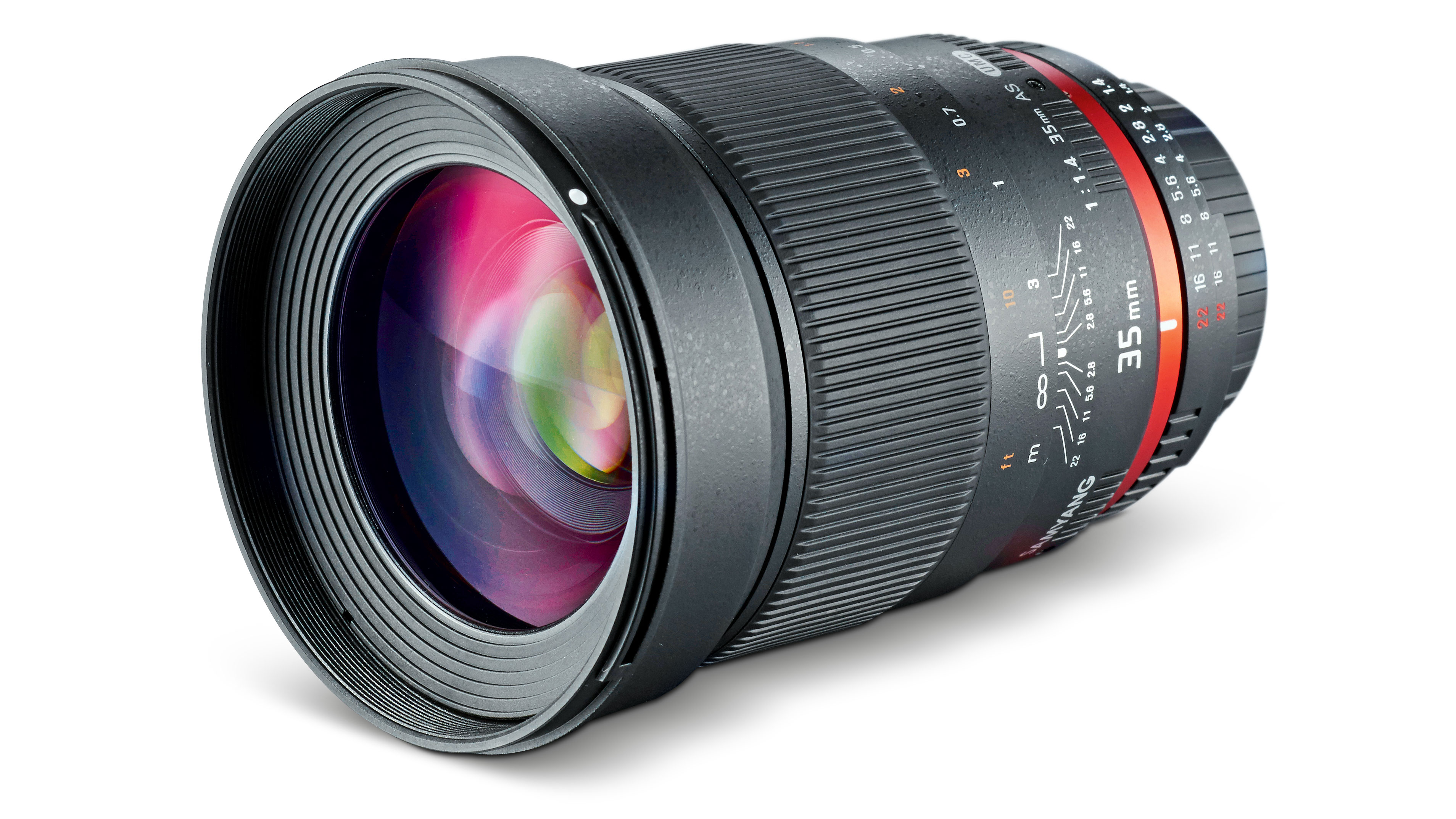Digital Camera World Verdict
A buttery-smooth manual focus lens, the Samyang 35mm f/1.4 AS UMC AE for Canon is a great street and general-purpose lens. Though it’s manual focus only, its electronic contacts allow you to make use of the viewfinder to check and fine-tune your focusing. It’s a big and bulky lens, more so than you’d expect from a 35mm perhaps, but it’s robust and durable with a solid feel, and aside from anything else, it’s just downright enjoyable to use.
Pros
- +
Smooth manual focusing action
- +
Focus distance scale
- +
Useful electronic contacts
Cons
- -
No weather sealing
Why you can trust Digital Camera World
There are many Samyang lenses available in Canon-mount but, apart from the recent 14mm, all are purely manual-focus.
That’s not necessarily a drawback for street photography, as manual-focus lenses tend to have a long rotational travel in their focus rings, and a fluid feel to their movement. The Samyang 35mm f/1.4 AS UMC AE is typical in this respect, and features a focus scale with depth of field markings for apertures of f/2.8, f/5.6, f/11, f/16 and f/22.
For enhanced focusing accuracy, the lens also features built-in electronics that activate the focus confirmation lamp in the viewfinder. Many Canon-fit Samyang lenses require you to set the aperture manually, using an aperture ring on the lens body. With no electronic linkage, the aperture can’t be displayed in the camera’s viewfinder or LCD, and you can’t set the aperture from the camera. The ‘AE’ (Auto Exposure) edition of this lens enables camera-based aperture control, as well as use of the lens in all P, Av, Tv and M shooting modes.
Build quality is impressive and the lens has a solid feel. However, it’s one of the outright biggest lenses of its type, at 83x110mm and is almost as heavy as Canon’s 35mm f/1.4.

Performance
In our lab testing of the Samyang 35mm f/1.4 AS UMC AE Canon-fit, we found sharpness and contrast to be disappointing at wide apertures, but much improved from f/2.8 all the way to f/22. Colour fringing is minimal, even at the extreme corners of the frame but, while barrel distortion is well controlled, it’s technically a little worse than similar lenses from other manufacturers.
Its filter thread is way bigger than you might expect on a 35mm lens, at 77mm, and the lens comes supplied with a good-quality petal-shaped hood for keeping out stray light and controlling reflections. It’s also worth noting that while the lens’s construction feels strong and durable – not least because of its size – it doesn’t have weather-sealing, so it’d be worth thinking twice before you take it out into really rough conditions.
Read more:
The best camera deals, reviews, product advice, and unmissable photography news, direct to your inbox!
Best wide-angle lenses for Canon
Best budget telephoto-zoom lenses
Matthew Richards is a photographer and journalist who has spent years using and reviewing all manner of photo gear. He is Digital Camera World's principal lens reviewer – and has tested more primes and zooms than most people have had hot dinners!
His expertise with equipment doesn’t end there, though. He is also an encyclopedia when it comes to all manner of cameras, camera holsters and bags, flashguns, tripods and heads, printers, papers and inks, and just about anything imaging-related.
In an earlier life he was a broadcast engineer at the BBC, as well as a former editor of PC Guide.


